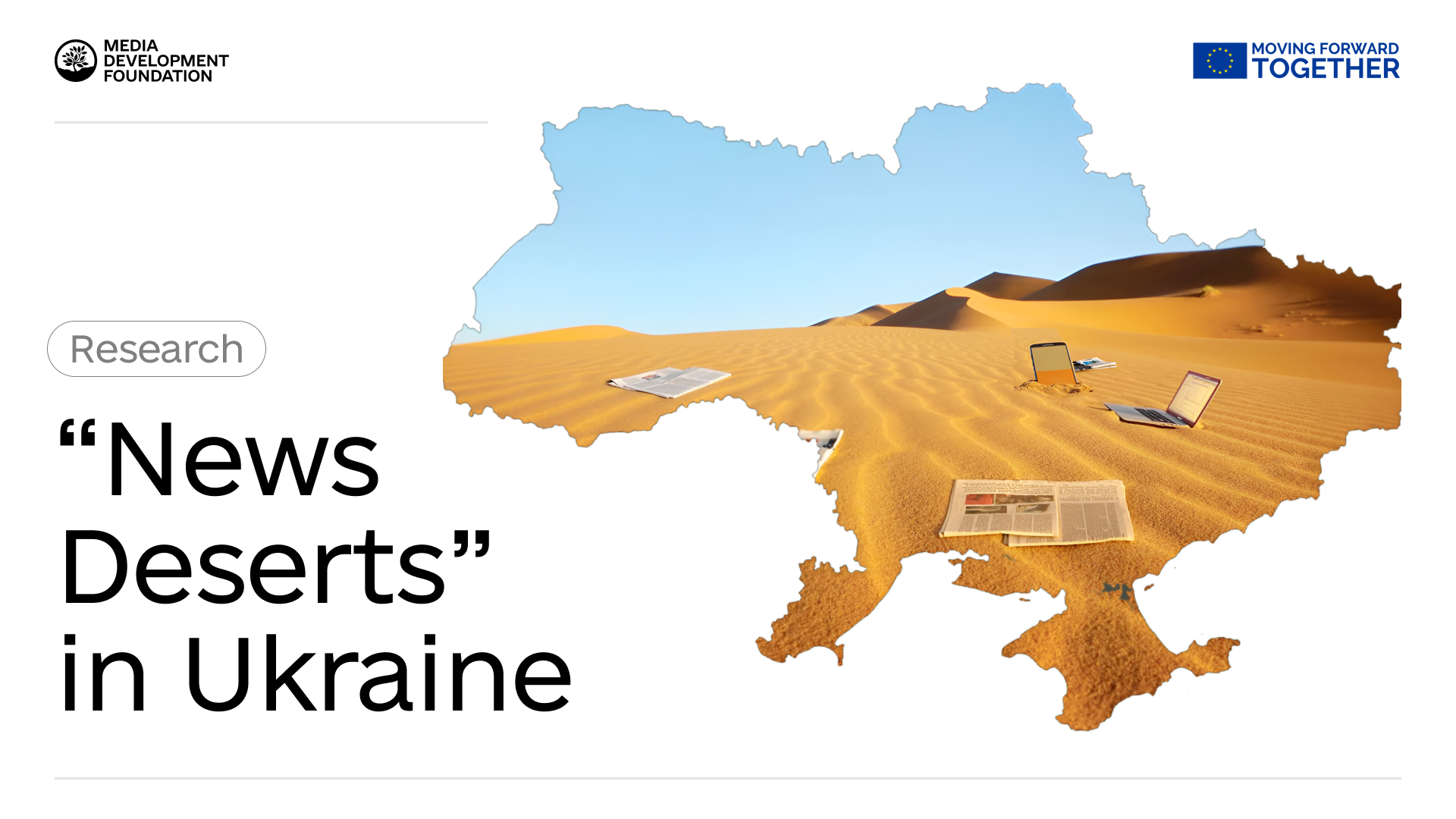Research on news deserts in Ukraine has found that only 23% of districts in Ukraine are informationally “healthy.”
We have analyzed 138 districts and two cities: Kyiv and Sevastopol. We found 1434 media. According to the research methodology, only 157 of them are independent and cover the critical information needs of hromadas. Here are the key findings.
Oblast centers are oases, small hromadas are deserts. Districts around oblast (regional) centers demonstrate a considerably higher “informational health” level. Small hromadas have a relatively minor number of media outlets and comparatively lower information coverage. Distance from large cities and poor logistical accessibility also negatively impact local media development. The farther away from the regional center, the higher the risk of “news deserts”.
The liberated territories demonstrate the highest level of “health”— the number of “healthy” and “partially healthy” liberated districts is 20% higher than in the districts controlled by Ukraine (which have not been subject to occupation) with the same level of “health.” We assume this situation is related to the increased attention of the Ukrainian and international communities to the liberated territories.
The collected data highlighted the striking differences between various districts’ “media station” and “information coverage” levels. On average, each district has fewer than one media outlet with its station there (0.93 outlets per district), while information coverage averages 2.5 media outlets per district. This dynamic carries risks for democratic development.







